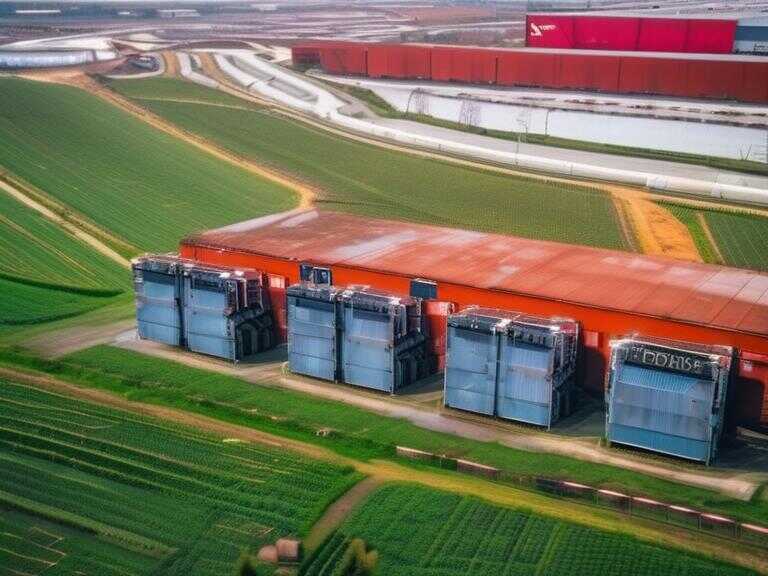
SpaceX Launches Sixth Test Flight of Starship Rocket, Achieves Milestones and Eyes Future Mission
SpaceX continues testing its Starship rocket, reaching space and achieving further development milestones, including improved catch attempts and heatshield tests.

On Tuesday, SpaceX successfully carried out the sixth test launch of its Starship rocket, marking a significant milestone in the ongoing development of the massive vehicle. The launch took place from SpaceX's private facility, known as "Starbase," located near Brownsville, Texas. Notably, the Starship flight was unmanned, indicating the company's commitment to advancing its technology without putting crewed missions at risk.
Successful Flight and Splashdown
The Starship rocket achieved its designated objectives by reaching space and successfully traveling halfway around the Earth before reentering the atmosphere and splashing down in the Indian Ocean. This achievement demonstrates SpaceX's progress in developing the Starship system for future missions beyond our planet.
Booster Recovery Attempt
During the launch, SpaceX had intended to return the rocket's "Super Heavy" booster after its separation from Starship and land it on the arms of the company's launch tower. However, it was reported that the booster did not meet the necessary "commit criteria" for the catch attempt and subsequently splashed down in the Gulf of Mexico instead. The decision to prioritize the safety of the booster over the catch attempt underscores SpaceX's commitment to refining its technology through extensive testing.
As part of its continuous improvement efforts, SpaceX utilized this test flight to further enhance the capabilities of the Starship vehicle. The company tested the reintegration of an engine while in space and conducted trials on new elements of its heat shield. These additional tests demonstrate SpaceX's determination to push the boundaries of aerospace technology with each successive test flight.
Daylight Splashdown
The timing of the evening launch on this occasion resulted in a significant milestone, as it marked the first time the Starship made a daylight splashdown in the Indian Ocean. This achievement not only showcases the advancements in the Starship program but also provides valuable data for future missions.
VIP Attendance
The presence of notable figures at the launch further highlighted the significance of the event. Among the attendees was President-elect Donald Trump, who had previously witnessed SpaceX's inaugural astronaut launch in Florida in 2020. The involvement of prominent individuals underscores the heightened interest and scrutiny surrounding SpaceX's progressive developments in the aerospace industry.
Increased Launch Cadence
Since April 2023, SpaceX has conducted six spaceflight tests of the full Starship rocket system, demonstrating a steadily increasing launch cadence. This accelerated pace of testing signifies the company's commitment to expediting the development of the Starship system, which is poised to revolutionize space travel and exploration.
Regulatory Approval
The Federal Aviation Administration (FAA) granted authorization for SpaceX to proceed with the sixth flight after the successful completion of the fifth launch. This regulatory approval underscores the FAA's confidence in SpaceX's ability to conduct safe and successful test flights as the company continues to push the boundaries of aerospace technology.
It is worth noting that the fifth launch, while successful, was not without its challenges. SpaceX management revealed in a post-launch audio that the booster nearly missed the catch due to a timing issue with one of the rocket's subsystems. This close call highlights the intricacies involved in the testing process and the importance of fine-tuning systems for optimal performance.
In response to the near miss, SpaceX implemented hardware upgrades to the rocket's booster to enhance redundancy and improve structural strength. These continual enhancements demonstrate the company's commitment to iterating on its designs and incorporating lessons learned from each test flight.
The Starship system is designed to be fully reusable, with the aim of providing a new method for transporting cargo and people beyond Earth. Additionally, Starship plays a crucial role in NASA's plans for returning astronauts to the moon, as it has been selected as the crewed lunar lander for NASA's Artemis moon program. This collaboration underscores the significance of the Starship system in advancing human exploration beyond our planet.
Impressive Specifications
Standing at 397 feet tall and measuring approximately 30 feet in diameter when fully stacked on the Super Heavy booster, Starship is both the tallest and most powerful rocket ever launched. The Super Heavy booster, which stands 232 feet tall, comprises 33 Raptor engines that collectively produce an astonishing 16.7 million pounds of thrust — nearly double the 8.8 million pounds of thrust generated by NASA's Space Launch System rocket during its inaugural launch in 2022.
Starship itself, reaching 165 feet in height, is equipped with six Raptor engines — three designed for operation in the Earth's atmosphere and three optimized for the vacuum of space. The rocket's propulsion system relies on liquid oxygen and liquid methane, with the entire system requiring over 10 million pounds of propellant for launch.
Looking Ahead
As SpaceX continues to test and refine the Starship system, the aerospace community is eagerly anticipating the future possibilities and potential applications of this groundbreaking technology. With each successful test flight, SpaceX moves closer to realizing its vision of revolutionizing space travel, paving the way for new opportunities in exploration, research, and commercial endeavors beyond Earth.
Share news















